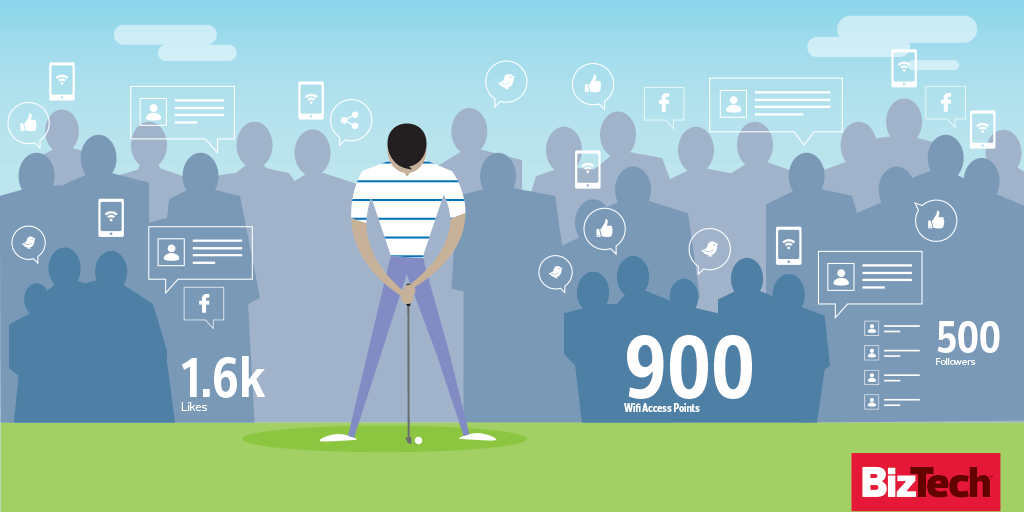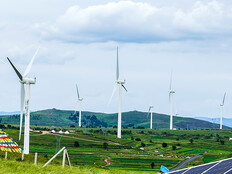Golf Courses Use Wi-Fi, GPS and Mobile Devices to Enhance Operations
At first glance, golf courses, with their lush green grass, groves of trees and scenic views, might not look high-tech. But behind the scenes, cutting-edge technology is being used to manage the courses and enhance the golf experience.
Take Trump National Doral Miami, for example. The golf resort, which features four golf courses, including the famed Blue Monster, is flush with state-of-the art technology. For example, a new irrigation system is connected to the resort’s IP network, allowing the grounds staff to centrally manage the watering schedule.
“The irrigation is all automated and computerized now,” says Scott Mahler, the resort’s director of information technology. “If the weather patterns change, they can remotely log in from home, or wherever they are, and change the settings on the fly.”
Golfers at the resort can schedule their tee times online. And with LED screens on each golf cart, golfers can keep score and view colorful maps, full-motion flyover graphics and details of each forthcoming hole.
The LED screens also serve as a marketing tool for Trump National Doral Miami: The screens feed advertisements for on-property offerings as well as menus for on-course dining. Golfers can use the touch screens to order food from the sports bar; the food will then be delivered to the cart at a later hole, Mahler says.
The golf carts are also GPS-enabled, allowing management to keep track of every cart on each golf course. Through software, administrators can communicate with golfers by sending texts to the LED screens, informing golfers of urgent messages, such as, “Please come back to the clubhouse; we found your ID,” he says.
Trump National Doral’s GPS system, which connects both to Wi-Fi and to cellular networks, allows management to confine carts to specific areas on a course, such as the cart path, and to prevent golfers from entering restricted areas.
“If you try to go to a restricted area, the cart won’t go forward and will make you back up,” Mahler says.
A Wireless Experience That Doesn’t Detract from the Game
About 900 Wi-Fi access points from Ruckus Wireless are installed throughout the Trump National Doral resort, with about 60 installed along the perimeters of each of the four golf courses. Golfers can access the resort’s Wi-Fi network only on the cart path leading up to the first and 18th holes.
A wireless mesh network is intentionally absent from the resort’s golf courses, because management wants patrons to enjoy the game, not stare at their phones, Mahler says. Golfers can use their phones over cellular networks if necessary.
“We are high-end. People pay a lot of money to play on our courses, and we want to encourage them to focus on the game and not check social media,” he says.
Tournaments Boost Wi-Fi Signals

Even though the Wi-Fi is limited to those playing golf at Trump National Doral, fans attending golf tournaments want good Wi-Fi so they can use their smartphones to check golf scores or post pictures or commentary over social media. To provide the bandwidth fans need, some tournaments on the PGA Tour install temporary Wi-Fi networks at the golf courses.
Overall, about 20 to 25 percent of the PGA Tour’s highly attended events have a public-facing Wi-Fi solution of some size, says Steve Evans, the PGA Tour’s senior vice president of information systems.
The PGA Tour encourages and recommends that tournaments partner with service providers to provide free Wi-Fi to fans. But when that’s not possible, some of the tournaments fund small Wi-Fi networks on their own, he says.
For example, Trump National Doral plans to beef up its Wi-Fi for spectators at the World Golf Championship-Cadillac Championship on the Blue Monster course next March. The resort will work with the PGA Tour to either partner with or hire a vendor to install additional Wi-Fi access points for fans along the first hole and in the grandstand area on the 18th hole, Mahler says.
Elsewhere, the Waste Management Phoenix Open at TPC Scottsdale has deployed Wi-Fi hotspots throughout the entire course for the past several years.
Wi-Fi access allows fans to download the tournament’s app, which offers extensive tournament information, including maps of each hole and the distances and locations of restrooms, ATMs and concession stands. It also provides links to the event’s social media accounts, including Facebook, Twitter, Instagram and YouTube.
“The entire course is now one giant hot spot,” says Dan Mahoney, tournament chairman of the 2016 Waste Management Phoenix Open. “Having access to free Wi-Fi allows our guests to connect with us and each other in the sharing of ideas, comments and concerns. We communicate with fans through monitored social media in order to ensure a quality experience for all.”
During the tournament last January, TPC Scottsdale and its partners added more than a dozen new wireless access points to improve capacity and reception between the 18th green and the 16th hole, where the largest concentration of spectators view the event, Mahoney says.
The wireless network also allows the event’s corporate sponsors, as well as their guests and customers, to check email and to work during the weeklong event, he says.
“The expanded Wi-Fi not only provides faster download speeds everywhere on the course, but it also cuts through cellular network congestion in the area,” he says.
Similarly, the Wells Fargo Championship at the Quail Hollow Club, in Charlotte, N.C., has provided free Wi-Fi to attendees for the past three years.
During this year’s event in May, the club and its partners temporarily installed 20 Wi-Fi hotspots around the clubhouse, the practice facility, the media center, the outdoor dining areas and a new social media hub — an area filled with sofas, desks and charging stations that was a big hit for younger golf fans, says Wells Fargo Championship spokesman Lee Patterson.
The Wi-Fi allowed the fans at the social media hub to “post selfies and pictures and view them on the four monitors we had in this tented area,” Patterson says.









